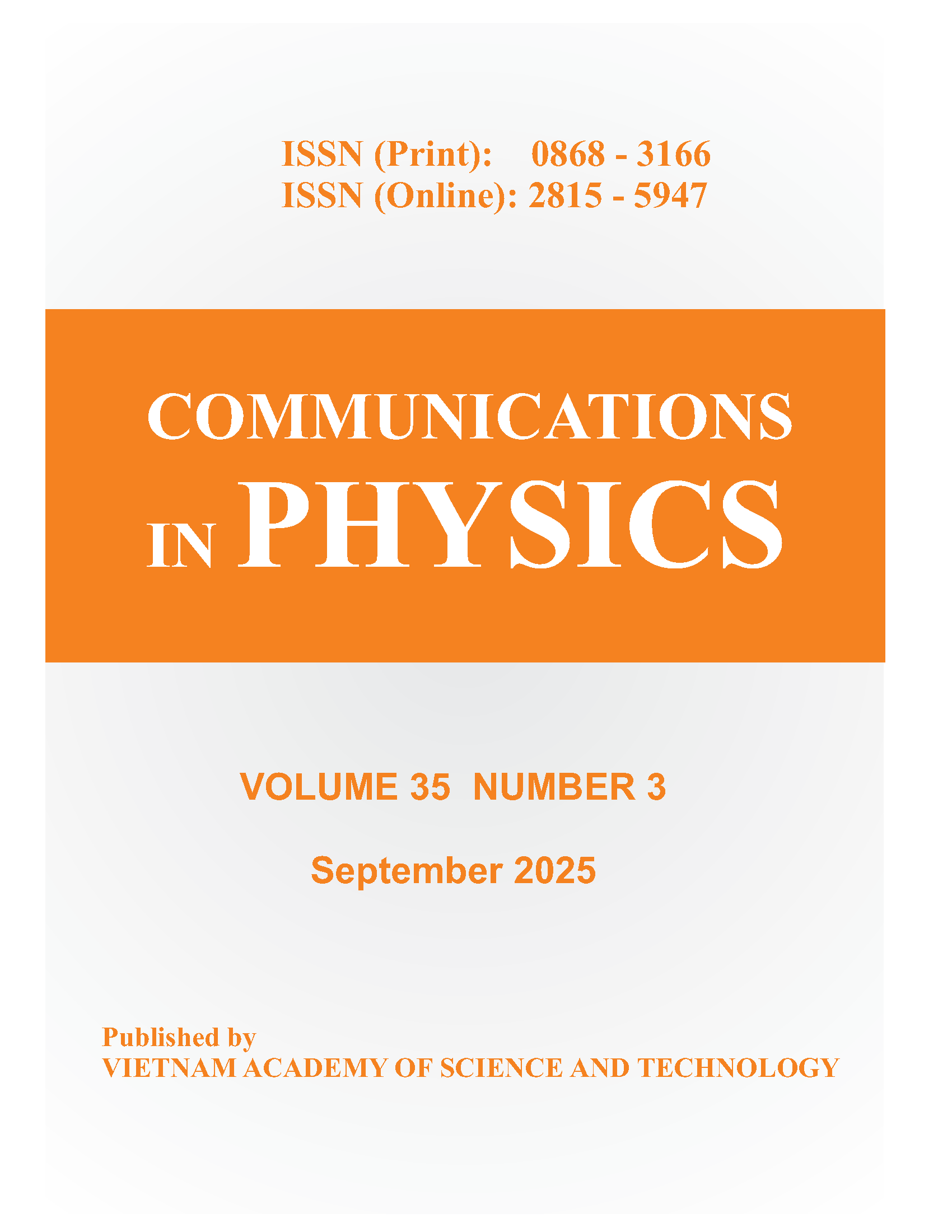Preparation of SERS Substrates for the Detection of Organic Molecules at Low Concentration
Author affiliations
DOI:
https://doi.org/10.15625/0868-3166/26/3/8053Keywords:
SERS, chemical etching, Raman, malachite greenAbstract
In this paper, we present the results of the preparation of Surface Enhanced Raman Spectroscopy (SERS) substrates by depositing silver nanoparticles (Ag NPs) onto a porous silicon wafer that is produced by the chemical etching process. The influences of the preparation parameters such as resistivity of the silicon wafer, the anodizing current density, etching time to the size of pores were systematically investigated. The SERS substrates prepared were characterised by using appropriate techniques: the morphology and pores size by scanning electron microscope (SEM), the SERS activity by Raman scattering measure of organic molecules malachite green (MG) embedded into the substrate at room temperature. Our experimental results show that a home-made Raman microscope system could be efficiently used to detect the MG molecules at the concentration lower than 10-7 M with the prepared SERS substrates which have Ag NPs in the obtained pores of 10 – 40 nm.
Downloads
References
U. K. Sur and J. Chowdhury, Surface-enhanced Raman scattering: overview of a versatile technique used in electrochemistry and nanoscience, Current Science 105 (7) (2013) 923-940.
Bhavya Sharma, Renee R. Frontiera, Anne-Isabelle Henry, Emilie Ringe, and Richard P. Van Duyne, SERS: Materials, applications, and the future, Materials Today 15 (1-2) (2012) 16-25.
Meikun Fana, Gustavo F.S. Andradec, Alexandre G. Brolod, A review on the fabrication of substrates for surface enhanced Raman spectroscopy and their applications in analytical chemistry, Analytica Chimica Acta 693 (2011) 7–25
Salman Daniel, Improved Performance of Reduced Silver Substrates in Surface Enhanced Raman Scattering, Thesis (2013).
Gloria M. Herrera, Amira C. Padilla and Samuel P. Hernandez-Rivera, Surface Enhanced Raman Scattering (SERS) Studies of Gold and Silver Nanoparticles Prepared by Laser Ablation, Nanomaterials 3 (2013) 158-172
V. Bandarenka, Kseniya V. Girel, Vitaly P. Bondarenko, Inna A. Khodasevich, Andrei Yu. Panarin, and Sergei N. Terekhov, Formation Regularities of Plasmonic Silver Nanostructures on Porous Silicon for Effective Surface-Enhanced Raman Scattering, Nanoscale Res Lett 11 (2016) 262.
Michaels A.M., Jiang J., Ag nanocrystal junctions as the site for surface-enhanced Raman scattering of single Rhodamine 6 G molecules, J. Phys. Chem. B 104 (2000) 11965-11971.
Chen S.P., Hosten C.M., Vivoni A., Birke R.L., Lombardi J.R, SERS investigation of NAD (+) adsorbed on a silver electrode, Langmuir 18 (2002) 9888-9900.
Lombardi J.R., Birke R.L., Lu T., Xu J., Charge-transfer theory of surface enhanced Raman spectroscopy: Herzberg-Teller contributions, J. Chem. Phys. 84 (1986) 4174-4180.
Haynes C.L., McFarland A.D., Smith M.T., Hulteen J.C., Van Duyne. R.P., Angle-resolved nanosphere lithography: Manipulation of nanoparticle size, shape, and interparticle spacing, J. Phys. Chem. B 106 (2002)1898-1902.
Jiao Y., Koktysh D.S., Phambu N., Weiss S.M., Dual-mode sensing platform based on colloidal gold functionalized porous silicon. Appl. Phys. Lett. 97 (2010) 153125:1-153125:3.
Lin H.H., Mock J., Smith D., Gao T., Sailor M.J., Surface-enhanced Raman scattering from silver-plated porous silicon, J. Phys. Chem. B 108 (2004) 11654-11659.
Giorgis F., Descrovi E., Chiodoni A., Froner E., Scarpa M., Venturello A., Geobaldo F., Porous silicon as efficient surface enhanced Raman scattering (SERS) substrate, Appl. Surf. Sci. 254 (2008) 7494-7497.
Bugayong, Electrochemical etching of isolated structures in p-type silicon, Thesis (2011).
Bruno Pettinger, Bin Ren, Gennaro Picardi, Rolf Schuster and Gerhard Ert, Tip-enhanced Raman spectroscopy (TERS) of malachite green isothiocyanate at Au (111): bleaching behavior under the influence of high electromagnetic fields, J. Raman Spectrosc. 36 (2005) 541–550.
Ying Zhao, Yuan Tian, Pinyi Ma,Aimin Yu, Hanqi Zhang and Yanhua Chen, Determination of melamine and malachite green by surface-enhanced Raman scattering spectroscopy using starch-coated silver nanoparticles as substrates, Anal. Methods 7 (2015) 8116-8122.
Downloads
Published
How to Cite
Issue
Section
License
Communications in Physics is licensed under a Creative Commons Attribution-ShareAlike 4.0 International License.
Copyright on any research article published in Communications in Physics is retained by the respective author(s), without restrictions. Authors grant VAST Journals System (VJS) a license to publish the article and identify itself as the original publisher. Upon author(s) by giving permission to Communications in Physics either via Communications in Physics portal or other channel to publish their research work in Communications in Physics agrees to all the terms and conditions of https://creativecommons.org/licenses/by-sa/4.0/ License and terms & condition set by VJS.











